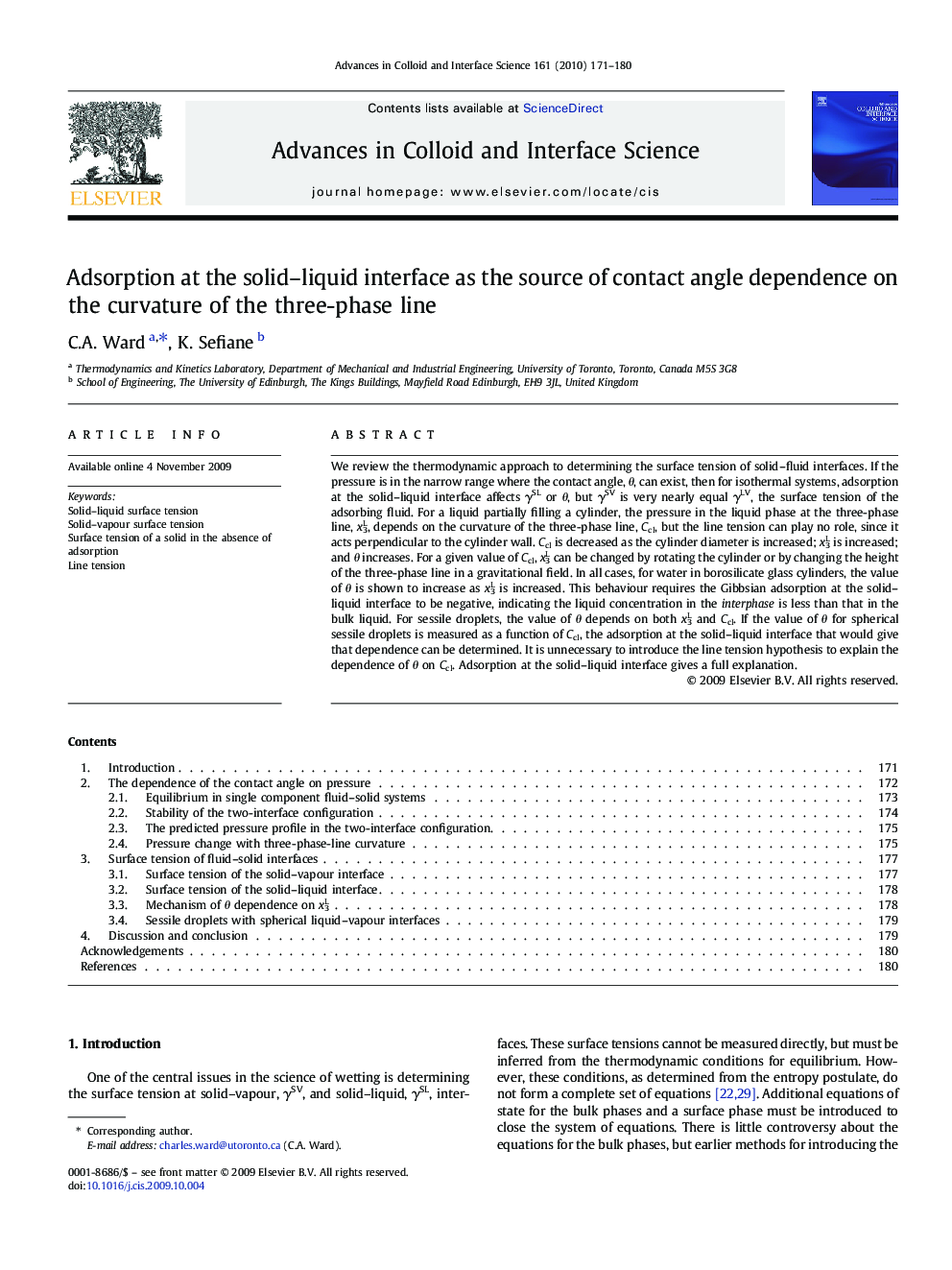| Article ID | Journal | Published Year | Pages | File Type |
|---|---|---|---|---|
| 591023 | Advances in Colloid and Interface Science | 2010 | 10 Pages |
We review the thermodynamic approach to determining the surface tension of solid–fluid interfaces. If the pressure is in the narrow range where the contact angle, θ, can exist, then for isothermal systems, adsorption at the solid–liquid interface affects γSL or θ, but γSV is very nearly equal γLV, the surface tension of the adsorbing fluid. For a liquid partially filling a cylinder, the pressure in the liquid phase at the three-phase line, x3L, depends on the curvature of the three-phase line, Ccl, but the line tension can play no role, since it acts perpendicular to the cylinder wall. Ccl is decreased as the cylinder diameter is increased; x3L is increased; and θ increases. For a given value of Ccl, x3L can be changed by rotating the cylinder or by changing the height of the three-phase line in a gravitational field. In all cases, for water in borosilicate glass cylinders, the value of θ is shown to increase as x3L is increased. This behaviour requires the Gibbsian adsorption at the solid–liquid interface to be negative, indicating the liquid concentration in the interphase is less than that in the bulk liquid. For sessile droplets, the value of θ depends on both x3L and Ccl. If the value of θ for spherical sessile droplets is measured as a function of Ccl, the adsorption at the solid–liquid interface that would give that dependence can be determined. It is unnecessary to introduce the line tension hypothesis to explain the dependence of θ on Ccl. Adsorption at the solid–liquid interface gives a full explanation.
